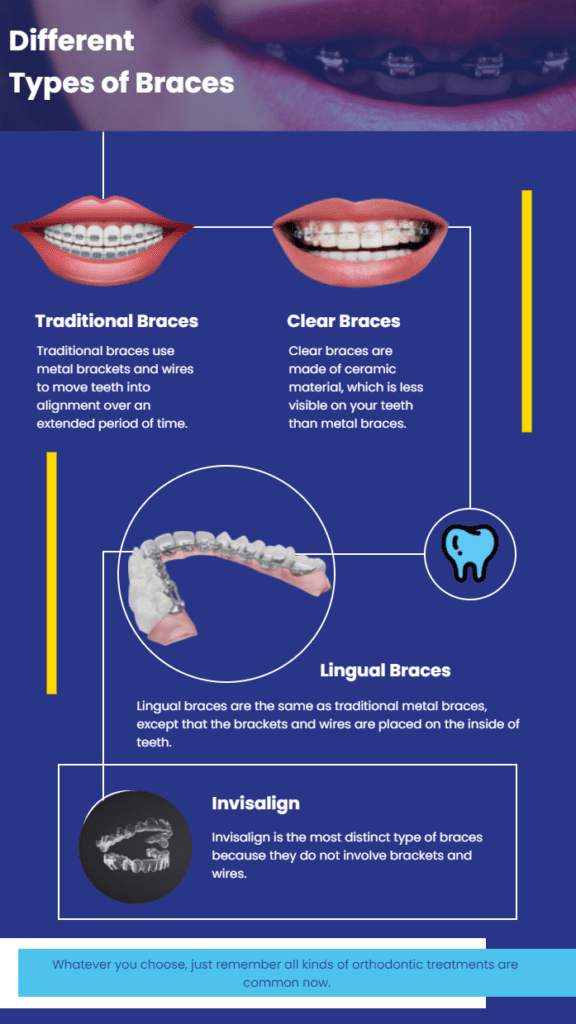Specialist Cumming Braces and Aligners: What to Know Prior To You Visit
Wiki Article
Comprehensive Guide to Orthodontics Procedures for Correcting Dental Imbalances
Comprehending the intricacies of each treatment, including their mechanisms, benefits, and potential drawbacks, is crucial in making informed decisions concerning one's orthodontic treatment. As we browse through the thorough guide to orthodontic procedures for fixing oral misalignments, the complex details of each method will certainly unravel, shedding light on the path toward a harmonious and functional oral alignment.Orthodontic Procedures Summary

In enhancement to typical dental braces and clear aligners, orthodontists might additionally suggest various other interventions like headwear, palatal expanders, or retainers to deal with specific positioning concerns (braces). These procedures are tailored to each patient's unique demands and might involve a combination of therapies to achieve the preferred outcomes. Normal adjustments and surveillance are essential parts of orthodontic therapy to ensure progress gets on track and to make any kind of needed modifications along the way. By going through orthodontic treatments, patients can not only attain a straighter smile however additionally boost their general oral health and feature.
Conventional Braces: How They Work
When considering orthodontic treatments for oral misalignments, typical dental braces stand apart as a time-tested approach for remedying teeth positioning. Typical dental braces consist of brackets, cords, and bands that function with each other to use continuous pressure on the teeth, slowly moving them into the preferred alignment. The braces are affixed to the teeth utilizing an unique adhesive, and the wires are threaded through the braces. By readjusting the tension of the cords, orthodontists can manage the instructions and force related to each tooth, assisting them right into proper placement in time.
One key facet of just how traditional braces job is the procedure of bone makeover. As pressure is applied to the teeth via the dental braces, the bone bordering the teeth is reshaped to support the brand-new tooth positions. This improvement is crucial for the long-term stability of the corrected positioning. Clients will need regular modifications at the orthodontist's workplace to make certain the dental braces continue to use the correct pressure for reliable teeth activity.
Unseen Aligners: Cons and pros
These clear, customized trays are practically unseen when worn, making them an attractive option for people looking for a more aesthetically pleasing orthodontic therapy. People can remove the aligners before eating or brushing their teeth, lowering the danger of food getting stuck in the home appliance and streamlining the cleaning procedure.
Surgical Orthodontic Options
Surgical interventions in orthodontics existing sensible choices for resolving complicated dental imbalances that may not be efficiently settled via standard orthodontic treatments. While invisible aligners and traditional dental braces can correct lots of orthodontic problems, specific situations require surgical intervention to attain optimal results. Surgical orthodontic alternatives are generally advised for extreme malocclusions, significant jaw discrepancies, and situations where the underlying bone structure needs modification to achieve correct alignment.One common surgical orthodontic procedure is orthognathic surgical treatment, which includes repositioning the jaws to remedy practical issues such as trouble talking or chewing. This surgical procedure is often performed in partnership with an orthodontist who helps line up the teeth before anchor and after the treatment. Surgical orthodontics might also include procedures to expose affected teeth, remove excess gum tissue, or reshape the jawbone to develop an extra unified facial account.
Prior to thinking about medical orthodontic choices, individuals undertake a thorough assessment to determine the need and potential advantages of such treatments. aligners. While surgical procedure may appear challenging, it can considerably boost both the feature and visual appeals of the smile in cases where standard orthodontic therapies drop short
Retainers and Post-Treatment Treatment

Post-treatment treatment involves adhering to the orthodontist's instructions vigilantly. This may consist of proper dental hygiene practices, attending follow-up appointments, and wearing the retainers as recommended. Failure to adhere to post-treatment care directions can cause regression, where the teeth slowly relocate back in the direction of their initial positions. Constant retainer wear, great dental hygiene, and regular dental examinations are vital for maintaining the outcomes achieved through orthodontic surgical procedure and ensuring the lasting stability of the dealt with oral alignment.
Verdict
To conclude, orthodontic treatments offer different options for dealing look at this website with dental misalignments. Typical braces utilize steel brackets and cords to move teeth into proper alignment. Undetectable aligners offer an even more very discreet alternative but might not be ideal for all cases. Surgical orthodontic choices are readily available for much more extreme imbalances. Retainers are commonly made use of post-treatment to keep the new placement. In general, orthodontic procedures can efficiently boost oral wellness and aesthetic look.As we browse through the detailed guide to orthodontic procedures for dealing with oral imbalances, the complex details of each method will unravel, losing light on the path towards a unified and practical dental placement. - aligners
One of the most usual orthodontic therapies our website is the use of braces, which are composed of steel braces and cords that apply mild pressure to progressively shift teeth into the wanted setting.When taking into consideration orthodontic therapies for oral imbalances, typical braces stand out as a time-tested method for correcting teeth positioning. Additionally, unseen aligners may not be appropriate for complicated orthodontic issues that need more significant teeth motion, as they are commonly suggested for moderate to modest instances. Retainers are personalized orthodontic devices designed to hold teeth in their fixed positions after the completion of orthodontic therapy.
Report this wiki page